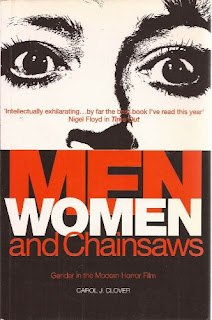
I’m isolating Hush, House at the End of the Street (2012), Silent House (2011), The Witch (2016), and It Follows (2015) for my sample of films. An updated application and analysis of where her theory stands is what I’m most interested in. For this updated analysis I want to isolate a few newer films, Clover covers Halloween, The Texas Chainsaw Massacre (1974–90), Psycho (1960), Nightmare on Elm Street, and Hell Night (1981) in great detail, I feel no need to re-visit those films. Like Hush (2016), the film which inspired this re-visit of Clover’s theory. The films have grown to be more dynamic, there’s fewer series like Halloween (1978–82) or N ightmare on Elm Street (1984–89), and more recently some of the best horror can only be found on the indie circuit. I’m not as much of a fan of the genre as I am of its dynamics and social implications. I’m very interested in seeing where this theory stands now within the world of modern horror/slasher films. The Final Girl’s defeat of the inevitably male killer is the process of emasculation that allows the transfer from sadistic to masochistic.

The basis of Clover’s theory lies in the reversal of the male-centered identification process of sadistic-voyeur to a masochistic-voyeur by having the identification shift to the Final Girl by the end of the film. She goes on to say that, “Slasher films present us in startlingly direct terms with a world in which male and female are at desperate odds but in which, at the same time, masculinity and femininity are more states of mind than body”, she argues that the genre, because of everything that it is, provides a very clear picture of current sexual attitudes of the viewing public. Clover elaborates on the qualities of the Final Girl throughout the essay, we will return to more specifics on the Final Girl later on.Ĭlover defines the specifics of the slasher film, “The qualities that locate the slasher film outside the usual aesthetic system are the very qualities that make it such a transparent source for (sub)cultural attitudes toward sex and gender in particular”(188). Her scene occupies the last ten to twenty minuets” (201).

She alone looks death in the face but she alone also finds the strength either to stay the killer long enough to be rescued or to kill him herself.

Her definition of the Final Girl can be summarized from her writing in the essay Her Body, Himself: Gender in the Slasher Film (1987), “She is abject terror personified. Clover, author of Men, Women, and Chain Saws: Gender in the Modern Horror Film (1992). The Final Girl theory is a common trope in horror and slasher films, made famous and fleshed out in detail by Carol J.


 0 kommentar(er)
0 kommentar(er)
